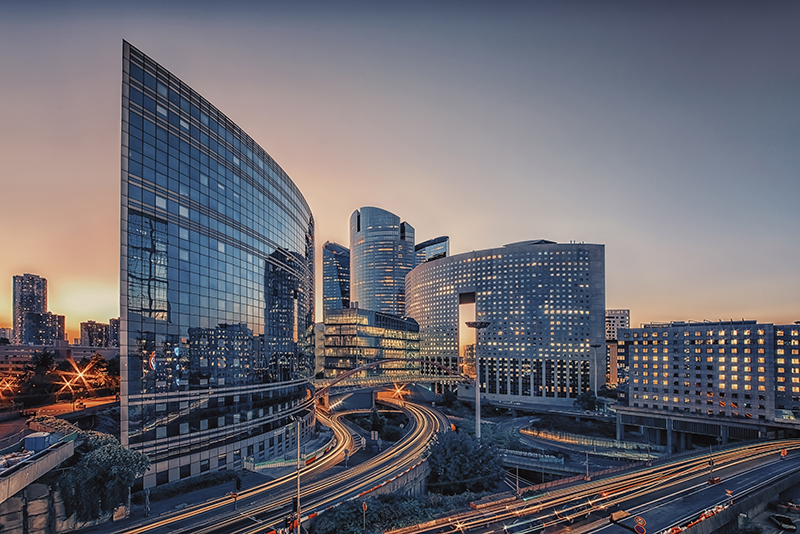Western European Glass Sector Reemerges
Flat glass sector faces lingering pandemic and energy shortage issues

Bottom Line
- Western Europe largely recovered after reliance on Russian gas supply disrupted due to the Ukraine invasion.
- Germany, France and the U.K.’s sectors are returning to pre-pandemic levels.
- High costs are challenging the sector’s continued recovery and expansion.
- NSG Group anticipates declining demand this year.
The glass sector of Western European region—which consists of the most economically developed countries of the region, including France, Germany and the U.K.—has returned to, or even surpassed, pre-pandemic metrics for growth. Nevertheless, the sector’s recovery, and continued growth, continues to be affected by energy costs.
Russian-Ukrainian conflict delayed post-pandemic recovery, and Western European industry continues to face high energy costs
The beginning of the Russian-Ukrainian war led to an unprecedented crisis in the Western European glass sector, as most Western European states were forced to suspend most of their supplies of cheap Russian gas—the main energy source of the industry for over 30 years.
Of the Western European states, Germany and its glassmaking sector was the most affected by end to Russian gas supply, due to the country’s traditional dependence on Russian energy sources. The suspension of Russian gas supply was a shock to the energy-intensive glass sector of most Western European states and even threatened to bankrupt some regional glassmakers.
Despite the ability of German authorities to restrict the sharp growth of energy prices in the industry, prices (primarily for electricity) still put serious pressure on the German glassmaking sector and its major players, preventing their more active growth.
Despite numerous calls by leading German glassmakers and the industry’s Association on the federal government to provide more serious support to the industry in order to deal with the ongoing growth of electricity prices, the problem has not yet been resolved.
Similar to other Western European glass manufacturers, French glassmakers are currently prioritizing the reduction of energy bills, as well as meeting local demand for glass. For this purpose, many French glass manufacturers in recent years have announced plans for modernization of existing sites, and construction of new furnaces.
Western European glass industry grows beyond pre-pandemic metrics
According to statistics published by regional glass associations, such as the German Federal Association of the Glass Industry (BV Glass), the Western European glass industry has almost returned to pre-pandemic key figures of performance, reflected by a significant increase of sales and local demand for glass.
That has allowed the industry to achieve generally good growth rates in recent months.
For example, currently the annual output of Germany’s glassmaking sector is valued at $11.9 billion in value and 7.86 million tons produced. In terms of market structure, container glass accounted for 4.7-4.8 million tons and flat glass for 2.4-2.5 million tonnes. Due to the industry’s need for wood as fuel, the centers of the German glass industry have always been the wooded low mountain ranges, especially the villages and towns in the Bavarian and Thuringian Forests.
According to an earlier report by the Statista analyst agency, in 2022 the German industry achieved overall sales figures of $13.6 billion, the highest result since 2018. While the official results for 2023 have not yet been published, most Statista analysts expect sales’ figures approaching $14.8 billion. Flat glass remains the largest segment in sales terms, with the construction sector being the largest consumer.
Like Germany, the U.K. flat glass industry has seen post-pandemic growth and is a major contributor to the country’s economy, representing 24,000 direct jobs across the whole supply chain. At present the largest manufacturing category within the sector is container glass, which totals 2.5 metric tonnes of glass for eight billion container products. The segment, as well as the entire market, will further grow this year, mainly driven by high demand for U.K. glass in foreign markets, particularly Asia.
France’s glass industry has also recovered to pre-pandemic levels, and is currently growing, according to Jacques Bordat, president of the French Federation of Trade Union Chambers of the Glass Industry.
Most French glassmakers are fully operational and working at full capacity, planning their further expansion into neighboring markets in years to come.
Currently, Germany remains a leading producer of glass and glassware in the EU, ahead of France and Italy, and it is expected that its leadership will be further strengthened in years to come. France currently remains the most important customer of German glass, accounting for the bulk of its exports. In general, according to BV Glas, German supplies its glass to more than 200 countries worldwide.
According to Germany’s BV Glas Association and independent analysts, the German glass sector will continue to grow in 2024, mostly driven by product innovation and the overall modernization and sophistication of manufacturing processes, that will contribute to the overall rise of efficiency of the sector.
Challenges to growth remain, beyond energy prices
While energy costs continue to be an issue in many Western European countries, other headwinds such as high costs, unstable demand and sustainability requirements are also affecting the sector’s glass industries.
Representatives for British Glass, the trade association of the U.K., has said that industry problems continue to prevent further growth, despite the industry’s ability to recover from the pandemic and to progress in recent years. Headwinds for the industry include higher manufacturing costs, unfair trade practices, and a reactive and costly trade remedy system, which affects the industry through existing duties on imports of British glass.
In 2024 and 2025, the major goals for the U.K. glass sector will be further environmental improvement, energy saving, as well as more active switching to biofuels to replace fossil fuels.
British Glass is also working to attract foreign interest in the industry’s imports, which is already high in Asian markets.
France’s industry has generally stabilized in recent months after a sharp rise in demand starting in 2022, which led to a shortage of certain glass products in the domestic market, such as wine bottles.
The Western European glass sector is dominated by global players in the flat glass market, including NSG Group. In recent years NSG has significantly strengthened its regional business by expanding production capacities, along with their restructuring and modernization.
Nevertheless, NSG Group leadership anticipates declining demand for 2024. “Due to the overall very challenging economic situation in the EU, and in the Western European countries (France, Germany and the UK) in particular, we anticipate a further decline in glass consumption in 2024, impacting both the construction industry as well as the automotive industry,” says Dr. Christian Quenett, Head of Architectural Glass Europe, NSG Group.


